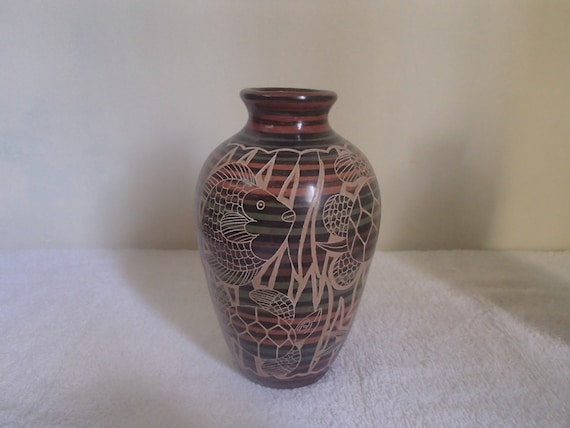
San Juan de Oriente,the next stop on our tour of the Pueblos Blancos, is famous for its ceramics. In a town of approx 5600, 4000 are directly involved in the production of ceramics. The history of ceramics in the town dates back to 1000 BC. Legends tell the story of a female spirit that lived in the nearby Masaya volcano that was rewarded for he prophecies with offerings of food on plates made in the village. The Spanish named the town San Juan de los Platos as the 'plates' were so significant to the economy. The name only changed with independence in 1821.
We visited the house and shop of one potter. He explained that all the clay was dug from local sources and each potter has to prepare it ready for use himself. This involves removing gravel then adding sand before working to a suitable consistency. We watched his demonstration carefully. He used his feet to turn the wheel and copious amounts of water to create his perfect shape. Some of us were inspired to have a go including the boys.
What brilliant first efforts!
Glazes are added often using recycled items. Human hair and old pens make the perfect paintbrushes. Intricate designs are then added and the pieces left to dry.
All
the work needs to be fired and I was delighted to be able to see the
homemade adobe kiln, a style used by all the artisans in the area. It
made me think about my own beast of a kiln in my workshop at home.I have
electrical power and a temperature controller. These kilns are heated
by burning wood and need a whole lot of experience to control the
temperature. The fire needs to be tended constantly for approximately 10
hours.
The finished pieces are displayed around the house and then sent to souvenir shops all over Nicaragua.It a pleasure to meet such a talented man. We all bought a few pieces and I'm pleased to report that they all made it home to England safely.
Browsing online I found an amazing charity called Potters for Peace.
https://www.facebook.com/pages/Potters-for-Peace/107534015941643
The charity help potters develop their techniques and help them to find outlets for their work. They have helped develop fuel efficient kilns to make the process less fuel thirsty. The new kilns have reduced the amount of fuel needed by 50%. After the devastation of trees in the area by Hurricane Mitch this helped many potters back into production.
https://www.facebook.com/pages/Potters-for-Peace/107534015941643
The charity help potters develop their techniques and help them to find outlets for their work. They have helped develop fuel efficient kilns to make the process less fuel thirsty. The new kilns have reduced the amount of fuel needed by 50%. After the devastation of trees in the area by Hurricane Mitch this helped many potters back into production.
Browsing on ETSY as you know I love to, I searched Nicaragua and found a number of ceramic artists with work for sale. Try and take a look-amazing!
 |




